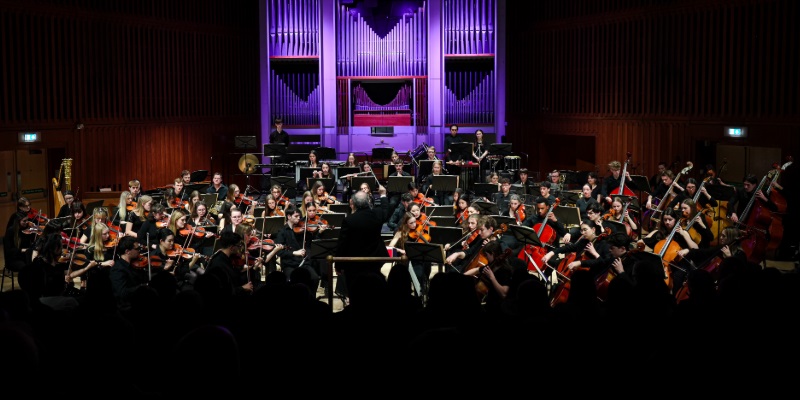
University Symphony Orchestra conductor John Stringer
WE are apt to forget that York has three full-size symphony orchestras: York Guildhall Orchestra and York Symphony Orchestra, of course, but also the university’s own orchestra, culled from throughout the campus. All are worthy of our attention.
The University Symphony Orchestra (USO) reminded us of its quality with this appearance under its regular conductor John Stringer.
It involved four northern European composers: Denmark’s Poul Ruders, Estonia’s Arvo Pärt and Finland’s Sibelius, before dipping southwards for Belgium’s Franck.
The Ruders was a UK premiere, despite being written as long ago as 1994: The Return Of The Light, music to accompany a ten-minute film on the Christmas gospel. It began with amorphous dissonance, until a drumbeat emerged and high strings evoked a chilly night.
Figments of a chorale floated into view and for the first time the announced sampled sounds on tape began to clarify, delivering watery sounds. Finally, woodwinds launched into a return of the chorale. One suspects this work is more successful as soundtrack than as a concert piece.
Pärt’s Greater Antiphons for strings is equally seasonal, based on the church’s Advent antiphons, or ‘O antiphons’ as they are known (since each of the seven – preludes to the Magnificat – opens with the exclamation ‘O’). They are brief but distinctive, if similar in general atmosphere to the Ruders.
After a gently rocking ‘O Adonai’, there was a bolder line in ‘O Root Of Jesse’ and some urgency in ‘O Key Of David’. ‘O Emmanuel’ was well worked, its major-chord lullaby becoming a fanfare before fading out.
Uncertain horns fuzzied the start of the Intermezzo in Sibelius’s Karelia Suite, although it firmed up when the string tremolos appeared. The Ballade was distinguished by fine string tutti and a sturdy cor anglais solo. The blending of the march’s two themes made a resplendent finish.
The lingering lethargy at the start of Franck’s Symphony in D minor was immediately dispelled by a vivid Allegro. Here was plenty of evidence, if any were needed, of what a fine body of violins the university boasts at the moment, always persuasive. They would also have been more shapely had contrasts been more marked, since in this relatively small hall everything tends to sound loud unless rigorously controlled.
Franck himself characterised the second half of the Allegretto as a scherzo, which makes the movement almost a scherzo and trio, but in reverse. The melancholy chromaticism of the opening was affecting but it was the violins’ pianissimo in the alleged scherzo that was absolutely magical.
The main theme in the finale needed more bite from the cellos who were a touch lightweight all evening. Not so the reply in the brass, who were in the forefront as the themes from earlier movements were recollected, resulting in an enormous climax as we reached a triumphant D major.
Review by Martin Dreyer






